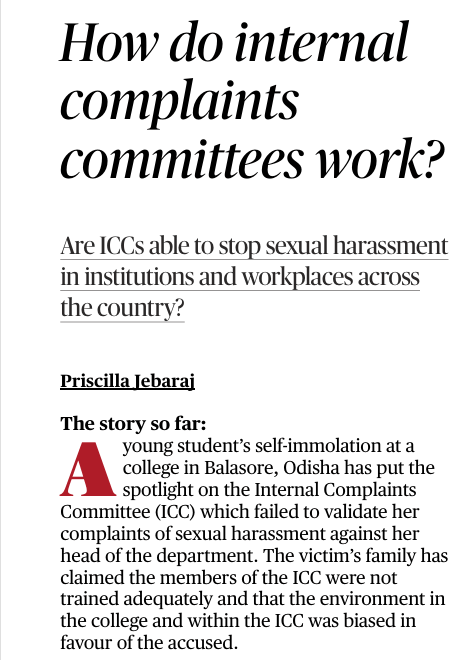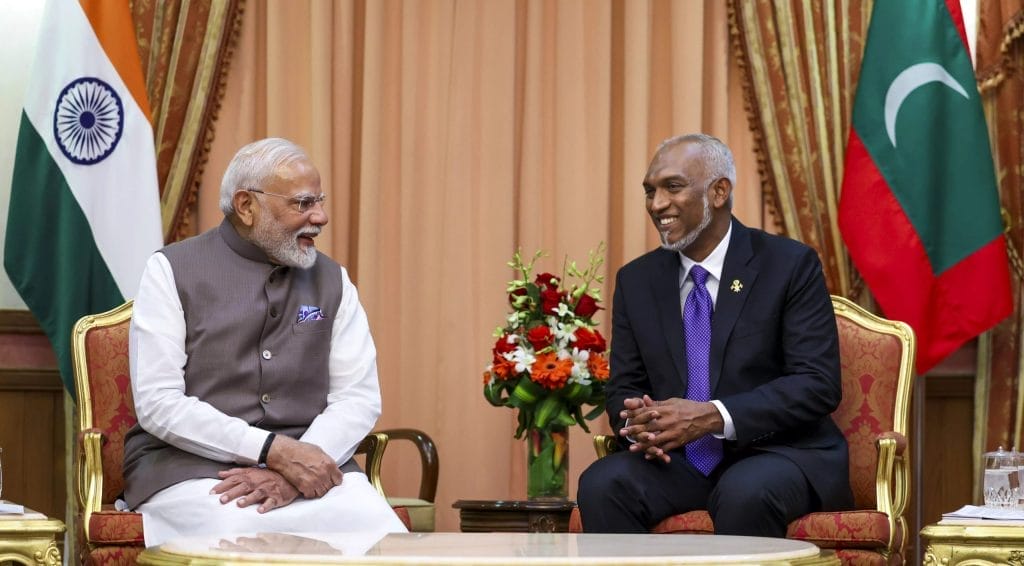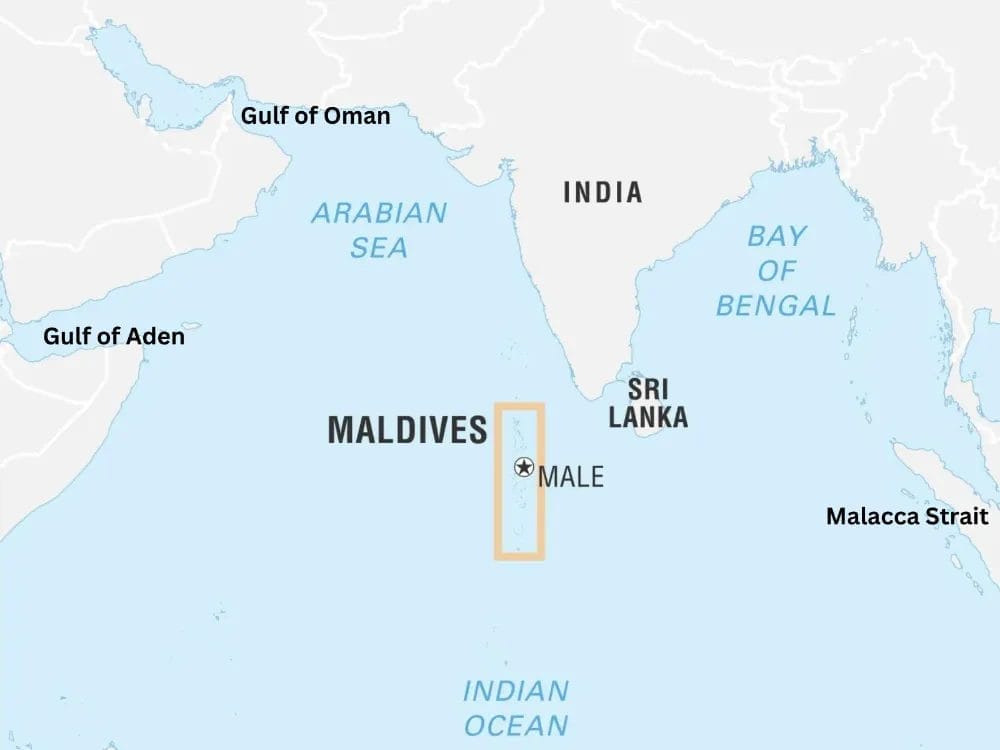
Why in News:
A young student’s self-immolation at a college in Balasore, Odisha has put the spotlight on the Internal Complaints Committee (ICC) which failed to validate her complaints of sexual harassment against her head of the department. Balasore case shows that even where ICCs are in place, they are merely a “dead letter” if there is insufficient training for members, if the power imbalance in a workplace is not addressed, and if there is no confidentiality being maintained.
UPSC CSE Relevance:
UPSC CSE in mains and prelims examination has focused on Welfare schemes for vulnerable sections of the population by the Centre and States and the performance of these schemes. A case in point is a following PYQ.
UPSC Mains PYQ 2023
Explain why suicide among young women is increasing in Indian society.
Establishment of ICC
- The Supreme Court first called for complaint committees to be set up in its 1997 judgment by laying down Vishakha guidelines in response to a petition filed after Bhanwari Devi Rape Case.
- After the infamous Nirbhaya Case, The Sexual Harassment of Women at Workplace (Prevention, Prohibition and Redressal) Act, 2013, often called the POSH Act, was enacted which superceded the Vishaka Guidelines.
- It mandated the constitution of ICCs at all workplaces which employed more than 10 people.
- Women working in smaller enterprises in the informal sector could complain to Local Committees to be set up by district authorities.
Composition
- Each ICC is to be headed by a Presiding Officer – a woman employed at a senior level at the workplace.
- At least two members should be employees preferably committed to the cause of women or who have had experience in social work or have legal knowledge.
- One member should be from an NGO devoted to women’s rights or a person familiar with sexual harassment issues.
- At least half of the members should be women.
Procedure and Powers
- Any aggrieved woman can complain in writing to the ICC or local committee within three months of the date of the harassment incident or series of incidents.
- The committee can help to settle the matter at the request of the woman or begin an inquiry into the complaint.
- The ICC has the same powers as are vested in a civil court under the Code of Civil Procedure.
- The inquiry is to be completed within 90 days.
- If the complaint is proved, the ICC must recommend the action to be taken against the accused.
- The employer is also required to aid the victim if she wishes to file a criminal complaint.
- The law mandates confidentiality regarding the contents of the complaint, the identity and addresses of the aggrieved woman, the respondent and witnesses, any information relating to conciliation and inquiry proceedings, and the recommendations of the ICC.
POSH Act, 2013
The Sexual Harassment of Women at Workplace (Prevention, Prohibition and Redressal) Act, 2013 (POSH Act) is a significant piece of Indian legislation aimed at creating a safe and respectful work environment for women.
Important provisions of the POSH Act:
1. Defining sexual harassment
The Act defines sexual harassment to include unwelcome physical contact and advances, demands for sexual favors, sexually colored remarks, showing pornography, and any other unwelcome sexual conduct, whether physical, verbal, or non-verbal. It also covers situations creating a hostile work environment or involving threats related to employment status based on accepting or rejecting sexual advances.
2. Applicability
The POSH Act applies to all workplaces, including government and private sectors, educational institutions, hospitals, and remote work. It protects a range of individuals, including permanent and contractual employees, interns, consultants, and visitors.
3. Employer’s responsibilities
- Submitting annual reports to the District Officer on complaints and actions.
- Forming an Internal Committee (IC) in organizations with 10 or more employees to handle complaints.
- Creating and sharing a POSH Policy.
- Conducting awareness and training programs.
- Maintaining confidentiality during investigations.
- Preventing retaliation against complainants or witnesses.
- Providing resources to the IC.
- Assisting the IC with information and attendance of individuals.
- Treating sexual harassment as misconduct and taking disciplinary action.
4. Internal and Local Committees (IC & LC) – as described above.
5. Complaint and redressal mechanism
- Recommendations: The IC recommends actions to the employer, such as warnings, termination, or counseling.
- Filing a Complaint: An aggrieved woman can file a written complaint with the IC or LC within three months.
- Conciliation: The IC may attempt conciliation at the complainant’s request, excluding monetary settlements.
- Inquiry: If conciliation fails, the IC conducts an inquiry within 90 days, with powers similar to a Civil Court.
- Monetary Compensation: The IC may recommend compensation based on factors like harm caused, lost opportunities, medical expenses, and the perpetrator’s financial status.
- Penalties for False Complaints: The Act includes provisions for disciplinary action against false complaints.
- Appeal: Decisions can be appealed to the appropriate court or tribunal within 90 days.
6. Non-compliance penalties
- Employers who fail to comply with the Act’s provisions, such as not forming an IC or conducting training, can face fines up to ₹50,000, and repeated violations may lead to business license cancellation.
- The POSH Act provides a comprehensive framework to address workplace sexual harassment and ensure a safer environment for women in India.




